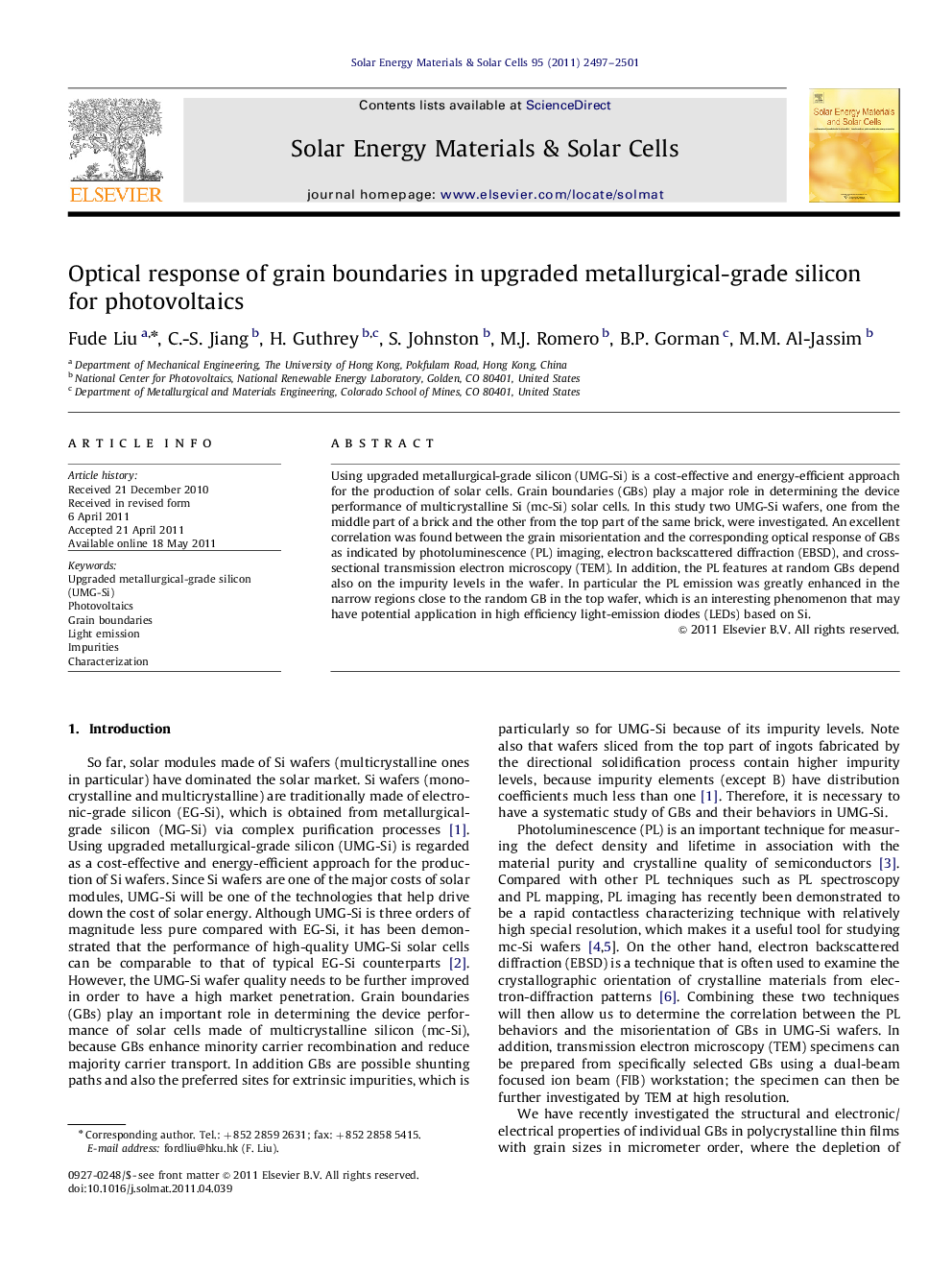| Article ID | Journal | Published Year | Pages | File Type |
|---|---|---|---|---|
| 78812 | Solar Energy Materials and Solar Cells | 2011 | 5 Pages |
Using upgraded metallurgical-grade silicon (UMG-Si) is a cost-effective and energy-efficient approach for the production of solar cells. Grain boundaries (GBs) play a major role in determining the device performance of multicrystalline Si (mc-Si) solar cells. In this study two UMG-Si wafers, one from the middle part of a brick and the other from the top part of the same brick, were investigated. An excellent correlation was found between the grain misorientation and the corresponding optical response of GBs as indicated by photoluminescence (PL) imaging, electron backscattered diffraction (EBSD), and cross-sectional transmission electron microscopy (TEM). In addition, the PL features at random GBs depend also on the impurity levels in the wafer. In particular the PL emission was greatly enhanced in the narrow regions close to the random GB in the top wafer, which is an interesting phenomenon that may have potential application in high efficiency light-emission diodes (LEDs) based on Si.
Graphical abstractFigure optionsDownload full-size imageDownload as PowerPoint slideHighlights► Two UMG-Si wafers with different impurity levels were investigated. ► Excellent correlation was found between the grain misorientation and the corresponding optical response of GBs. ► PL features at random GBs depend also on the impurity levels in the wafer.
